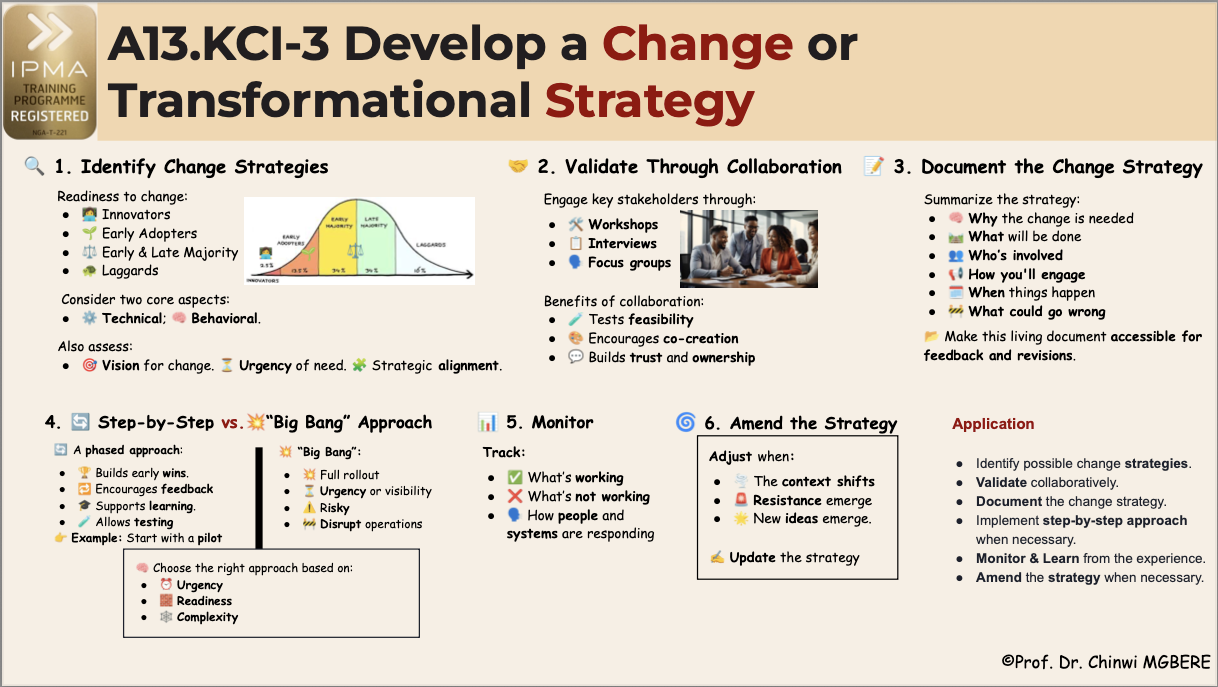

LESSON 3: DEVELOP CHANGE OR TRANSFORMATIONAL STRATEGY
CPD: 2 hours

A change strategy is a purposeful approach formulated by an individual or group to enable envisioned changes or transformations. It must consider the intensity and impact of the change, the capacity and readiness of the organization, community, or individuals to embrace change, and the timing to align with internal and external dynamics.
The development of a change strategy is not a solitary endeavor. It requires collaborative consultation, ongoing engagement, and regular updates based on feedback and evolving circumstances.
1-3. Identify, Validate, and Document the Change Strategy
1. Identify Possible Change Strategies
Start by identifying potential strategies for societal, organizational, and personal change. Acknowledge the diverse response levels to change, such as:
Consider both technical and behavioral aspects of change:
Also take into account:
2. Work Together to Validate the Strategies
Collaboration is essential. Engage stakeholders across levels through workshops, interviews, and focus groups to:
Shared understanding and active contribution from stakeholders reduce resistance and increase ownership.
3. Document the Change Strategy
Once validated, compile the change strategy into a comprehensive and accessible change plan. It should include:
Make this document available to all involved parties for feedback, revision, and continuous improvement.
4. Apply a Step-by-Step Approach When Necessary
Not all changes are suited to immediate, large-scale implementation. In many cases, a stepwise or phased approach is more effective:
For example, start with a pilot project or limited rollout to evaluate the effectiveness of the change before broader application.
While a "big bang" approach can create urgency and visibility, it is also riskier and can cause disruption. Choose the approach based on:
5. Learn from the Experience and Amend the Strategy When Necessary
Learn from the Experience
Ongoing monitoring, evaluation, and learning are crucial elements of any change strategy. Establish mechanisms to assess:
Gather both quantitative data (KPIs, milestones achieved) and qualitative insights (feedback, observations, interviews).
Encourage an environment of continuous learning, where experimentation and reflection are valued. Document lessons learned and share across the team or organization.
6. Amend the Strategy When Necessary
Change is not static. Be prepared to review and revise the strategy when:
Amending the strategy demonstrates agility and responsiveness, ensuring that change continues to deliver value and is aligned with the evolving needs of the organization or society.
To apply this framework to your current initiative, follow these steps: